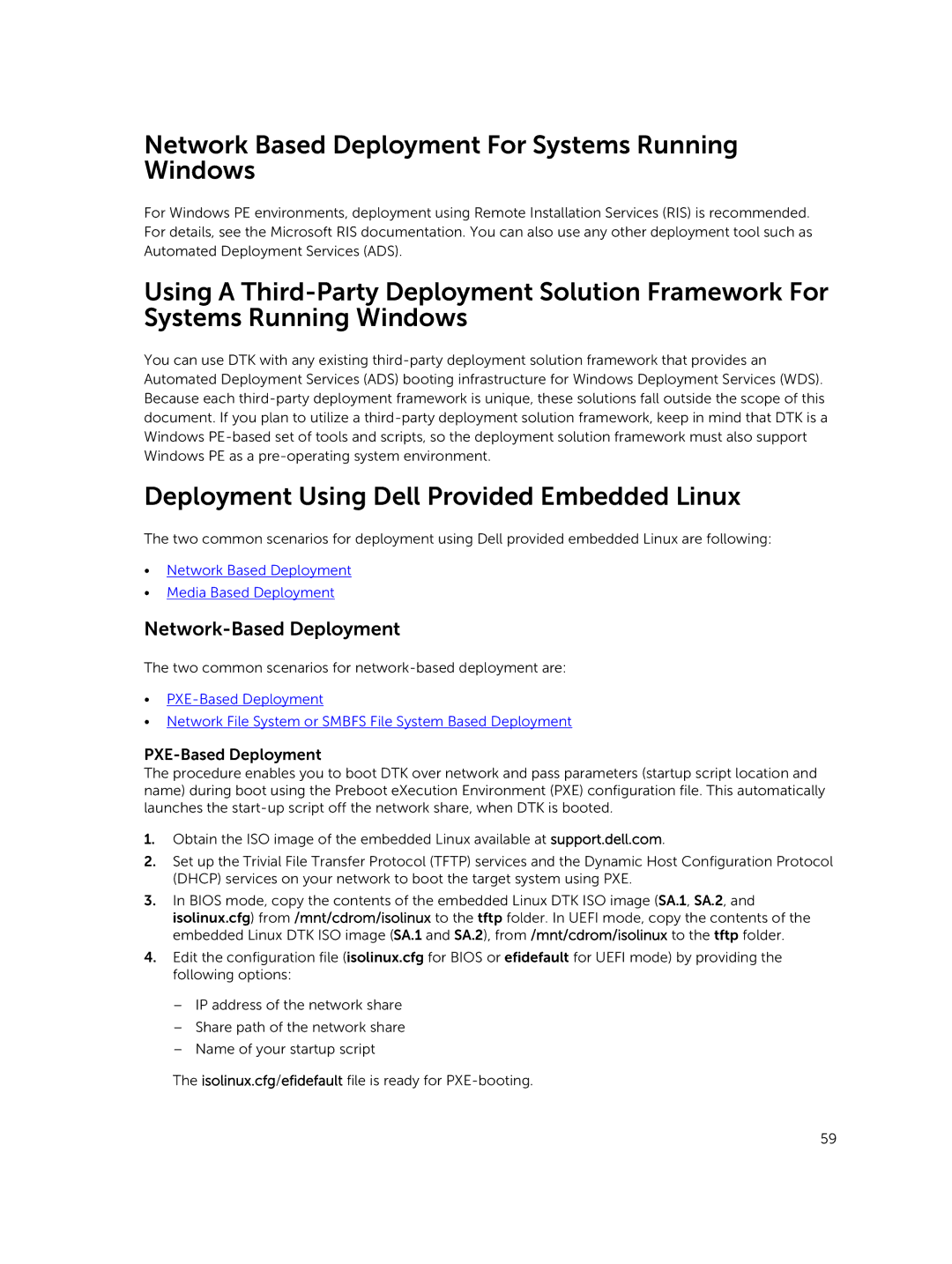Network Based Deployment For Systems Running Windows
For Windows PE environments, deployment using Remote Installation Services (RIS) is recommended. For details, see the Microsoft RIS documentation. You can also use any other deployment tool such as Automated Deployment Services (ADS).
Using A
You can use DTK with any existing
Deployment Using Dell Provided Embedded Linux
The two common scenarios for deployment using Dell provided embedded Linux are following:
•Network Based Deployment
•Media Based Deployment
Network-Based Deployment
The two common scenarios for
•
•Network File System or SMBFS File System Based Deployment
PXE-Based Deployment
The procedure enables you to boot DTK over network and pass parameters (startup script location and name) during boot using the Preboot eXecution Environment (PXE) configuration file. This automatically launches the
1.Obtain the ISO image of the embedded Linux available at support.dell.com.
2.Set up the Trivial File Transfer Protocol (TFTP) services and the Dynamic Host Configuration Protocol (DHCP) services on your network to boot the target system using PXE.
3.In BIOS mode, copy the contents of the embedded Linux DTK ISO image (SA.1, SA.2, and isolinux.cfg) from /mnt/cdrom/isolinux to the tftp folder. In UEFI mode, copy the contents of the embedded Linux DTK ISO image (SA.1 and SA.2), from /mnt/cdrom/isolinux to the tftp folder.
4.Edit the configuration file (isolinux.cfg for BIOS or efidefault for UEFI mode) by providing the following options:
–IP address of the network share
–Share path of the network share
–Name of your startup script
The isolinux.cfg/efidefault file is ready for
59
